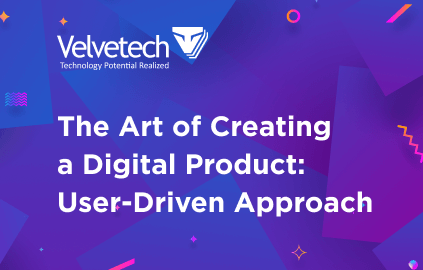We’re living in a time of endless options, lower attention spans, and the increasing value of personalized experiences that often mean digital. Now, more than ever, businesses have to differentiate by not only meeting customer needs but also offering customized services.
In the insurance industry, personalization isn’t a new concept per se. Clients have always wanted policy prices to reflect their unique circumstances, especially if they are someone who can be deemed as low-risk customers.
However, in recent years, companies have been trying to double down on their personalization efforts, leading to the term “hyper-personalization in insurance” to emerge. Today, that’s going to be the main focus of our discussion.
We’ll look into the way hyper-personalization ties in with InsurTech software and how you can begin implementing it for better customer service and higher profitability. Let’s get started.
User-Driven Approach
Watch our webinar and learn the top ways of reducing poor user satisfaction, low adoption rates, and decreased loyalty.
What Does Hyper-Personalization in Insurance Look Like?

In essence, hyper-personalization is an advanced way to tailor your services and products in accordance with an individual’s needs and preferences. For that, insurers use smart algorithms, big data, predictive analytics, and automation to create customized insurance experiences.
Unlike traditional personalization, which might use basic demographic or policy data, hyper-personalization digs deeper into behavioral, contextual, and real-time data to meet customers’ unique demands more effectively.
As we’ve said, insurers have always had to personalize offers. Whether it be during insurance quoting or when things have already reached the underwriting stage. However, hyper-personalization takes things a step further.
“When it comes to the insurance industry, today’s priority is a well-defined hyper-personalization strategy that focuses on the 3 Rs of experience-led engagement ‒ delivering the Right products, at the Right time through the Right channels.”
In order to do what Capgemini encourages, insurance companies have to start leveraging data more extensively and embrace innovative technologies like artificial intelligence and machine learning for data processing and pattern recognition.
Learn more about Machine Learning in Insurance
As a result, insurers can automate and improve not only the customization of policy terms for each client but also the delivery of personalized offers to customer segments that might be interested in them.
Why Personalizing Offerings Is a Benefit for Insurers and Their Clients

While the advantages of this approach are on the surface, let’s see the most prominent ones that make companies invest in digital strategies to support it.
For Insurers
Customer retention and reduced churn rate are obviously the main benefits to highlight here. But what else? With advanced analytics, you can improve risk assessment and allow for more accurate underwriting and pricing. And this will naturally reduce claims losses and enhance profitability.
On the operational level, hyper-personalization streamlines processes like policy recommendations and claims management. By automating these processes, you gain enhanced efficiency and if you combine it with cross-selling and upselling opportunities from better customer insights, you‘ll see revenue growth.
For Customers
Now, let’s turn to the client’s side. Again, the advantages are pretty obvious since who doesn’t want to receive policies that are specifically designed for their unique needs? Being under- or over-insured isn’t something customers look for.
The approach often leads to cost savings and simplifies decision-making, as customers receive relevant recommendations without the need to sift through generic options. Plus, most interactions with insurers become hassle-free and save precious time.
As an example of benefits for clients, let’s look at the role of personalized life insurance. The customization here ensures that coverage aligns with personal needs, such as providing financial security for dependents, covering outstanding debts, or planning for long-term expenses like education or retirement.
Additionally, tailored life insurance can adapt to changes in a customer’s life. It can be anything from marriage and having children to career transitions. So, now, you hopefully see how this approach can foster trust and satisfaction among the insured.
Biggest Challenge to Hyper-Personalization in Insurance
Although there’s more and more data being generated from various software and connected devices, it inadvertently creates a challenge for insurance companies. Namely, it facilitates the growth of data disparity.
Insurers work with a lot of data, but it often comes from a variety of resources, is used by different departments, isn’t aggregated, and may require high levels of manual processing. Naturally, this increases the likelihood of data silos, low-quality insights, and time-consuming analysis.
Since hyper-personalization thrives from high-quality data and speedy processing, getting rid of data disparity should be the very first thing on your priorities list. So, we recommend you take the following measures before pursuing digital personalization in insurance:
- Rethink the organizational structure to motivate interdepartmental collaboration
- Turn to integration services to connect disparate systems
- Sort through outdated data to make sure you work with the most current information
- Unify data management for better business intelligence
- Commit to maintaining a centralized data strategy for the long-term
Once you’ve eliminated data silos, updated and centralized all of your valuable data — it’s finally time to focus on insurance personalization through every channel.
How to Implement Hyper-Personalization in Insurance?
Before your company begins implementing hyper-personalization strategies, it’s worth discussing how exactly that can be done. Overall, everything is centered around three core must-do’s — in-depth customer understanding, reliance on new technologies, and embracing the tailored approach in your marketing initiatives.

Understand Your Customers Through Data
In order to deliver true hyper-personalization, you’ve got to have a top-notch understanding of your customers and prospects. The more informed you are, the better you’ll be able to anticipate their needs and cater to them.
So, make sure you’re collecting customer data from all the various touchpoints through which they might be interacting with your insurance company. For example, it’s great to at least stay on top of website activity, mobile app usage, social media behavior, and exchanges with your contact center agents.
The collected information should be stored securely but provide easy access for the staff that requires it. So, consider keeping it unified in a CRM solution and relying on it throughout various customer-facing communications.
Find out how we Implemented a CRM to Better Engage Prospects
Combining customer data from various channels in this way will allow you to better understand your clients and develop highly personalized relationships. Thus, leading to higher levels of loyalty and, as a result, revenue growth.
So, don’t underestimate the value of collecting as much quality data as possible to become more informed about customer attitudes, behaviors, and preferences.

Embrace New Tech for Personalized Insurance Offers
New technologies are paving the way in terms of personalization. First, thanks to the Internet of Things (IoT), insurers can now get insights that were never available before.
For example, auto insurance companies can benefit from the use of smart tires that have connected sensors embedded in them to track driver behavior, tire pressure, and the like. As you can imagine, this can be a great source of information about how risky a prospective customer may be.
Read up on how Velvetech Developed IoT-Powered Smart Tires
Similarly, in the case of health insurance, incorporating data gathered from wearables and other IoMT-based devices can provide insurers with supplemental information. For instance, how often a person works out and what are their daily habits. Once again, this data can be instrumental in customizing the insurance premium to the unique circumstances of a client.
The second way in which new technologies can help with insurance hyper-personalization is by automating data processing and generating highly accurate forecasts. You see, thanks to ML algorithms that are being used more prominently across all kinds of industries, data can be analyzed at a speed that no human can match.
Moreover, intelligent algorithms also fuel predictive analytics that essentially helps identify high-risk individuals by forecasting the likelihood of them having any claim-related events.
For instance, when going through historical medical information, workout frequencies, and other patient data, these tools can discover patterns and predict if the person in question might be more likely to develop a chronic illness. Thus, allowing you to personalize the policy price accordingly.

Personalize Your Marketing Efforts
Besides providing personalized policy offers, you can use all the data and insights acquired to shape your marketing efforts as well. So, try to segment customers and target audience based on their unique characteristics and send out offers they may find most interesting via the preferred channels.
For example, you may discover that the young adult customer segment of your auto insurance company spends a lot of time interacting via social media or the website. Hence, make sure any personalized campaigns you create for that group are on there and not the TV.
Conversely, if another customer segment prefers to call your contact center and discuss potential offers with your agents, remember to empower them with intelligent call analytics. That way, your team will always be equipped to deliver excellent hyper-personalized service.
Learn how our Call Analytics Platform Boosted Insurance Sales
How to Start With Hyper-Personalization
“Well-executed hyper-personalization can deliver 8x the return on investment on marketing spend, and lift sales by 10% or more.”
— Deloitte
There’s no doubt that hyper-personalization in insurance can bring enormous benefits to modern organizations. With a thorough approach to data collection and processing as well as reliance on AI and ML, you can quickly begin customizing the experiences you bring to clients. Thus, resulting in increased revenue growth and more streamlined operations.
If you’d like to get started with hyper-personalization or feel that your infrastructure may not be ready for it yet — don’t hesitate to reach out to Velvetech. We’ve spent years offering extensive insurance software development services and can quickly identify what next steps might be most optimal for your IT strategy.
So, feel free to schedule a call with our team. We’ll be happy to discuss a potential collaboration.































